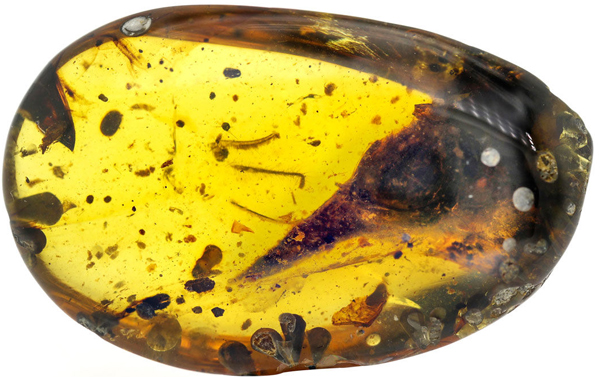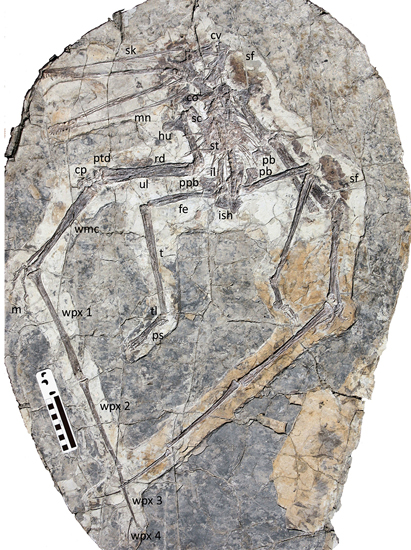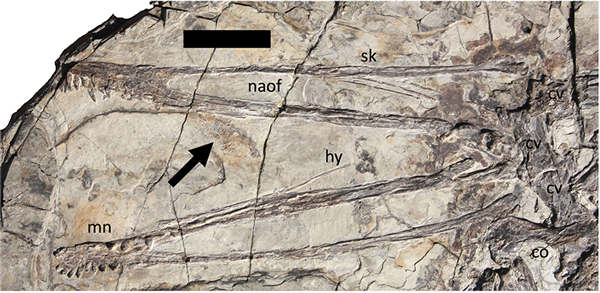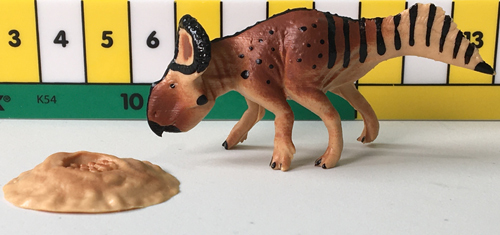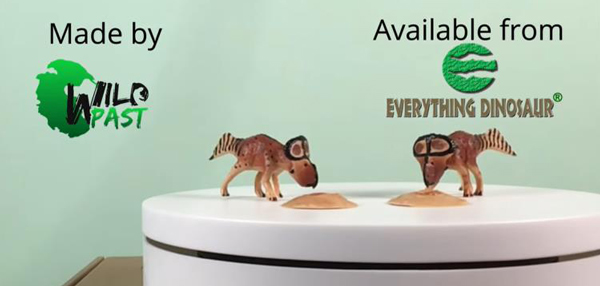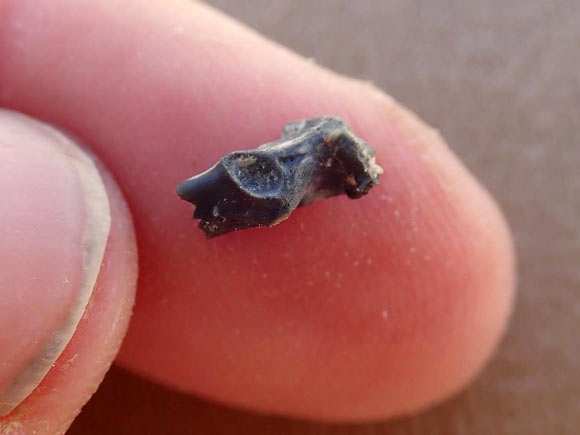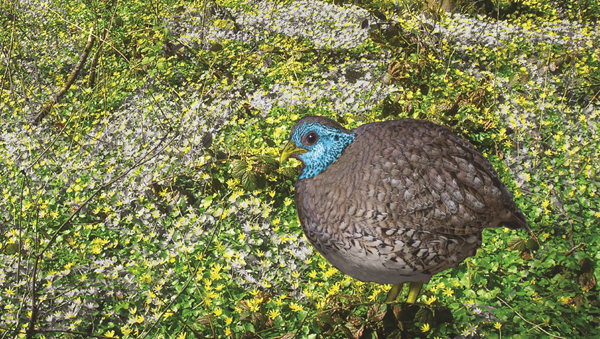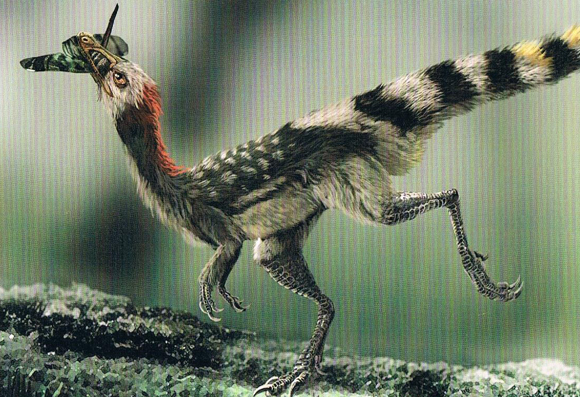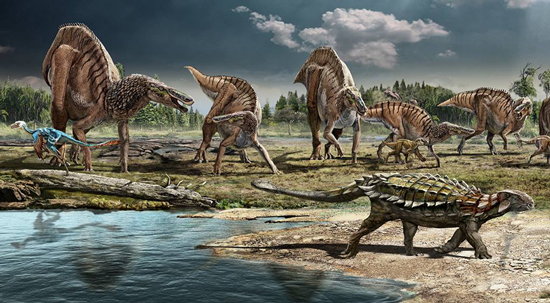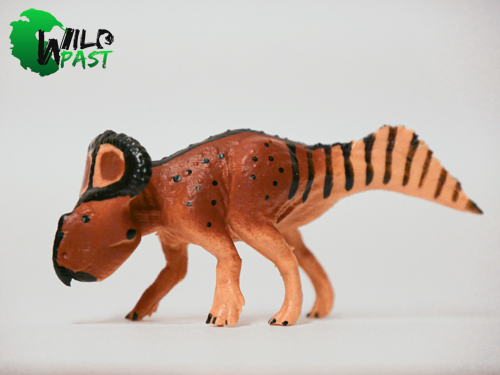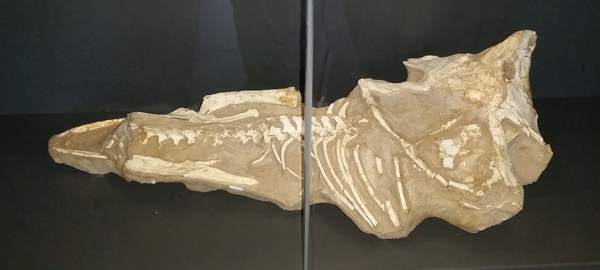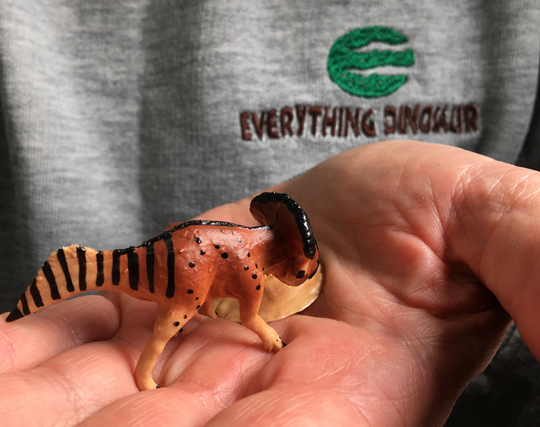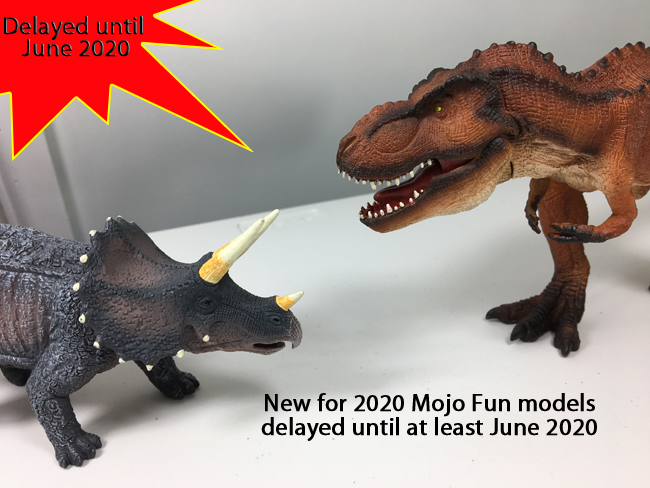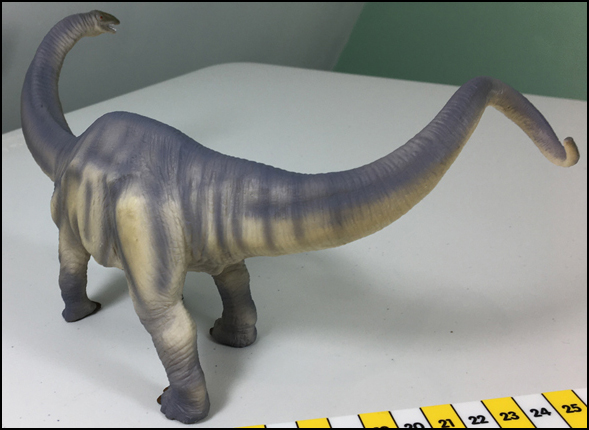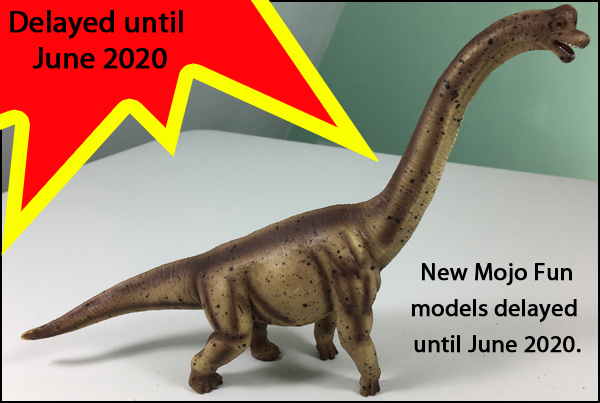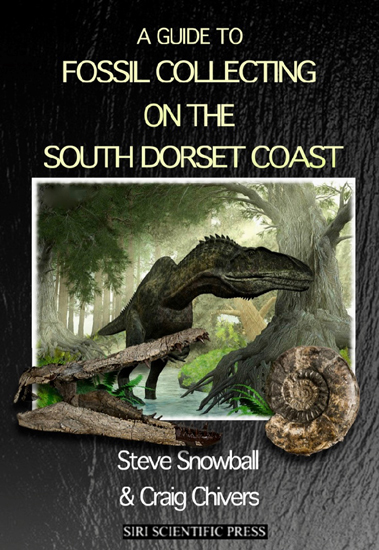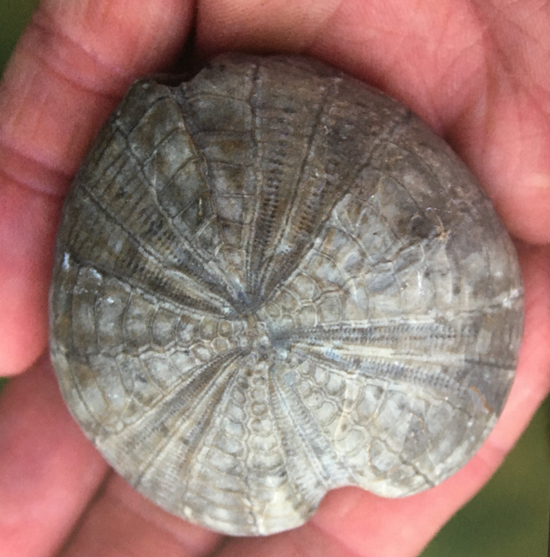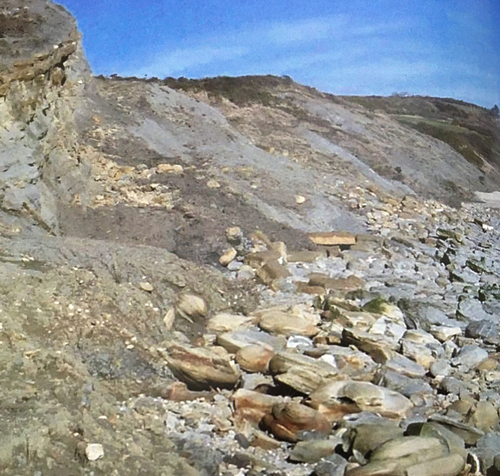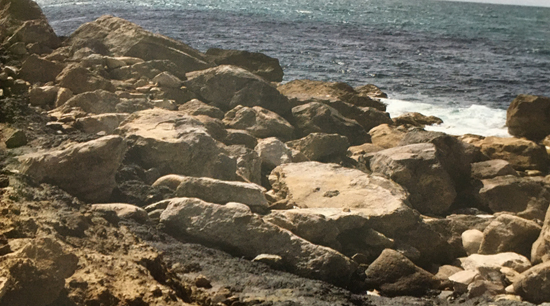Hummingbird-sized Dinosaur from Burmese Amber
Oculudentavis khaungraae – Tiny Fossil Skull Could Represent the Smallest Dinosaur
Team members at Everything Dinosaur had been aware that something big was brewing amongst those members of the academia with an interest in vertebrate palaeontology. An academic paper published in the journal “Nature”, describes the beautifully preserved but very small skull of a theropod dinosaur preserved in Cretaceous amber from northern Myanmar (Burma). The fossil might just represent the smallest dinosaur known to science.
The fossil might be tiny but this wonderful discovery could have very big implications when it comes to understanding how miniaturisation occurs within vertebrates. It also provides yet another remarkable insight into the types of creatures that shared the Late Cretaceous with non-avian dinosaurs and pterosaurs. Named Oculudentavis khaungraae it probably weighed about as much as the smallest living bird, the Bee Hummingbird (Mellisuga helenae), which weighs about two grammes, that is about half the weight of a single sheet of A4 paper.
The Polished Amber Nodule Reveals a Bounty of Preserved Material Including the Tiny Skull of Oculudentavis khaungraae
Picture credit: Lida Xing et al
When we Say Tiny we Mean Tiny!
The amber nodule containing the beautifully preserved skull, complete with the tongue, measures a little over three centimetres in length. The skull, with its tiny jaws, lined with miniscule but pointed teeth, measures less than 1.5 cm long. It is estimated that Oculudentavis had a total body length including tail of about 9 cm. Palaeontologists have speculated that “microsaurs” – tiny dinosaurs co-existed with the giants, just as African spiny mice (genus Acomys), can be found today in the same habitats as the largest, terrestrial animals – elephants (Loxodonta).
Tantalising fossil footprints had been found that hinted at the possible existence of “microsaurs” or “tinysaurs” if you will – assuming of course that these trace fossils were not made by very young animals, with a lot of growing to do.
To read about the smallest dinosaur tracks: Smallest Dinosaur Tracks Known to Science Discovered.
A Life Reconstruction of the Tiny Oculudentavis khaungraae
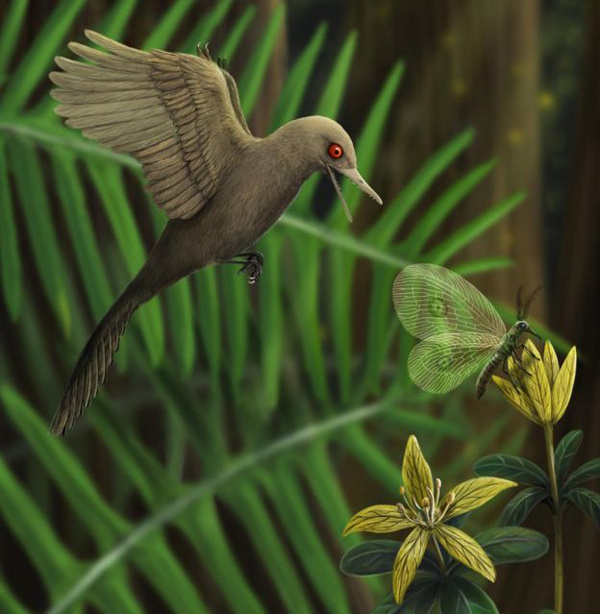
Picture credit: Han Zhixin
Oculudentavis – a Possible Member of the Enantiornithes Clade
Where Oculudentavis sits on the Dinosauria family tree is uncertain. Whilst the cranial material has provided the authors, which include researchers from the Chinese Academy of Sciences and the Natural History Museum of Los Angeles County, with a wealth of data, interpreting the taxonomy is somewhat troublesome. If it is a member of the Maniraptora, this large clade includes dinosaurs as well as true birds (avians). Just how closely related to the birds or whether it is a highly specialised dinosaur remains open to debate. Oculudentavis could be an enantiornithine bird, an extinct lineage of avians that were the most common birds of the Cretaceous, or it might be more closely related to the dinosaur end of the Maniraptora spectrum.
It may be small, but the specimen does not represent a juvenile or young animal, the skull bones are sufficiently fused for scientists to confidently state that the tiny creature is an adult or at least a sub-adult.
Eye Tooth Bird
Oculudentavis demonstrates a suite of unusual anatomical characteristics. The eyes for example, are located on the side of the head, helpful for providing all round vision but not capable of delivering stereoscopic vision to aid in the capture of small prey. The orbits are huge, the eyes would have bulged out of the head somewhat and the bones that make up the sclerotic ring (the circle of bones in the orbit) are spoon shaped, which is a morphology previously only known in lizards. These scleral ossicles form a cone, similar to the bones in the eyes of owls, so it can be deduced that just like owls, Oculudentavis had exceptional vision.
What is a little more surprising is that the opening at the centre of the ossicles is narrow and restricted. This would have limited the amount of light coming into the eye, so unlike most owls this little Cretaceous creature probably operated in bright, sunny conditions – it was most likely diurnal.
A Computer Generated Image of the Skull of O. khaungraae
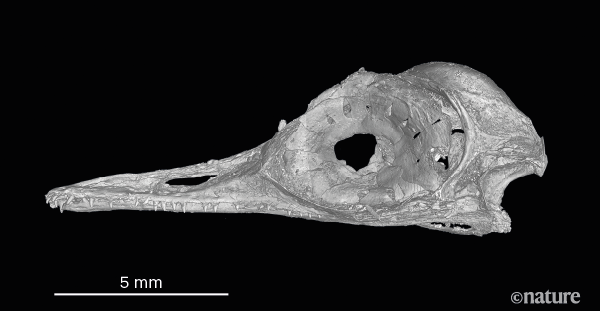
Picture credit: Xing et al (Nature)
Huge Eyes
Such is the size and extent of the eye socket, that they extend over the jaws and some of the upper jaw teeth are located directly under the orbit. It is this characteristic and those large eyes, that gives Oculudentavis its name, from the Latin for eye “oculus”, “dentes” teeth and “avis” for bird. The species name honours Khaung Ra who donated the specimen to the Hupoge Amber Museum.
The Fossil Specimen (HPG-15-3) with Computer Generated Images and Accompanying Line Drawings
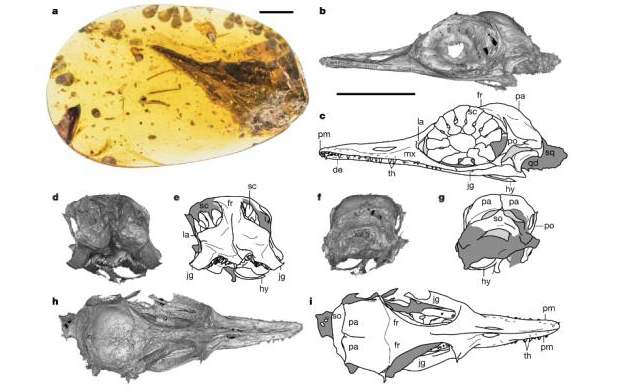
Picture credit: Xing et al (Nature)
The photograph (above), shows the amber piece (a), a scan of the skull (b) with line drawing (c). Images d, f and h represent other views of the scans, whilst images e, g and h represent the associated line drawings. The amber specimen comes from the Angbamo site, close to the township of Tanai (Myitkyina district, Hukawng valley, Kachin province) in northern Myanmar. The strata are believed to represent the Cenomanian stage of the Late Cretaceous, the fossil therefore is approximately 99 million years old.
Living on an Island?
The fossil discovery represents the smallest known dinosaur of the Mesozoic and it highlights the importance of amber as a means of permitting scientists to gain an insight into the ecology of a habitat thanks to the preservation of small animals and other material that would not necessarily have been preserved under other taphonomic processes. Specimens preserved in amber are rapidly emerging as an exceptional way to study tiny vertebrates from the Late Cretaceous.
Miniaturisation in animals is commonly associated with living in isolated environments where resources are limited. The tiny Oculudentavis lends weight to the idea that the amber deposits in northern Myanmar were produced in forests that existed on islands. In addition, the size and morphology of this species suggest a previously unknown bauplan and a previously undetected ecology.
To read more articles about amazing fossil discoveries made in Burmese amber:
Ammonite shell discovery: Ammonite Shell Found in Amber Nodule.
Baby snake found in amber: Baby Prehistoric Snake – Xiaophis myanmarensis Preserved in Amber.
Ancient lice feeding on feathers: Lice Feeding on Feathers Entombed in Amber.
Tiny frogs preserved in Cretaceous amber: Tiny Frogs Trapped in Cretaceous Amber.
Oculudentavis and Post Publication Doubts
Following publication, a number of academics have questioned the conclusions made by Xing et al with regards to this fossil representing a member of the Maniraptora. It is certainly true that the validity of the interpretation of the fossil skull as maniraptoran has subsequently been challenged post publication (Wang Wei et al). They comment that the shape of the skull is not unique to archosaurs, many lizards for example, show similar characteristics, the phylogenetic analysis is questioned, along with the apparent absence of an antorbital fenestra (an opening in the skull of all known archosaurs between the orbit and the naris).
Is this the Skull of a Lizard?
It is suggested that the skull actually comes from a lizard and that the specimen is not from an archosaur at all.
The original publication noted that the spoon-shaped bones that make up the sclerotic ring were reminiscent of that seen in the eye sockets of lizards. Scleral bones of this shape have never been found in a dinosaur or a bird, it is suggested that these bones support the idea that the fossil is that of a lizard and not a member of the Archosauria.
The roots of the tiny teeth do not seem to be located in sockets in the jawbone (thecodont dentition). This was a peculiar feature remarked upon by a number of academics once this paper had been widely circulated. Teeth located in sockets is a characteristic of toothed-archosaurs such as crocodilians and the dinosaurs. Other types of tetrapod also show this tooth morphology, but in Oculudentavis the teeth are not in sockets but either fused to the jaw (acrodont dentition) or located within grooves that can be found along the length of the jaw bones (pleurodont dentition).
The number of teeth in the jaw far exceeds that known for any type of ancient bird. The tooth line extending under the eye-socket (orbit), is also highly unusual. Such anatomical traits are associated with the Squamata not with the Archosauria.
These arguments (along with others, such as the absence of feathers), have led some scientists to question the conclusions made in the original Nature publication. Oculudentavis might not be a bird or a dinosaur, it might represent the preserved remains of a lizard.


